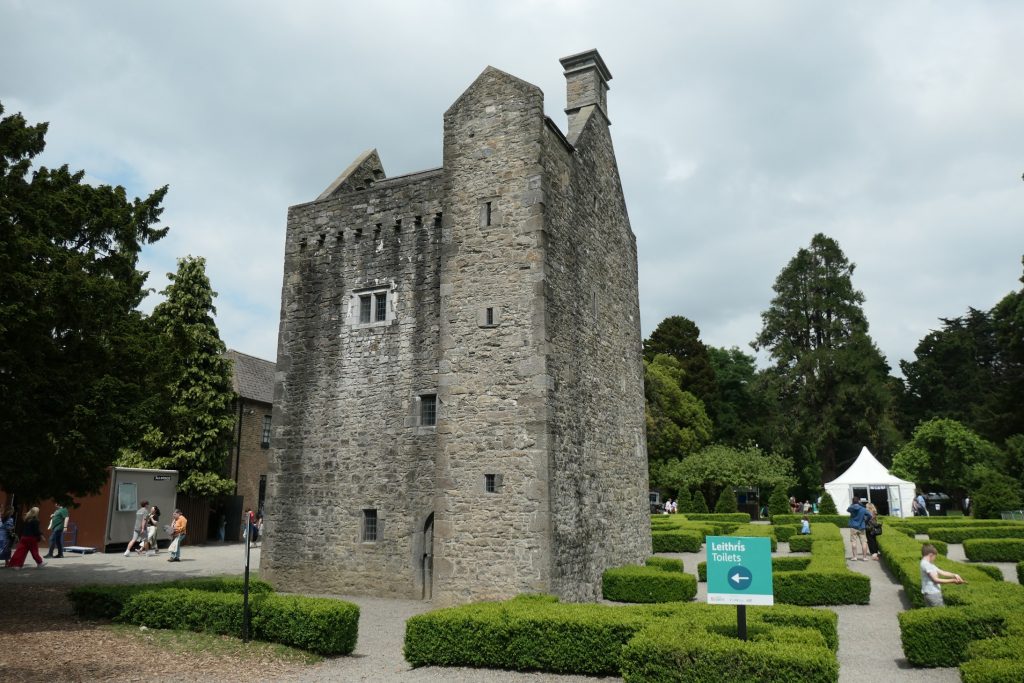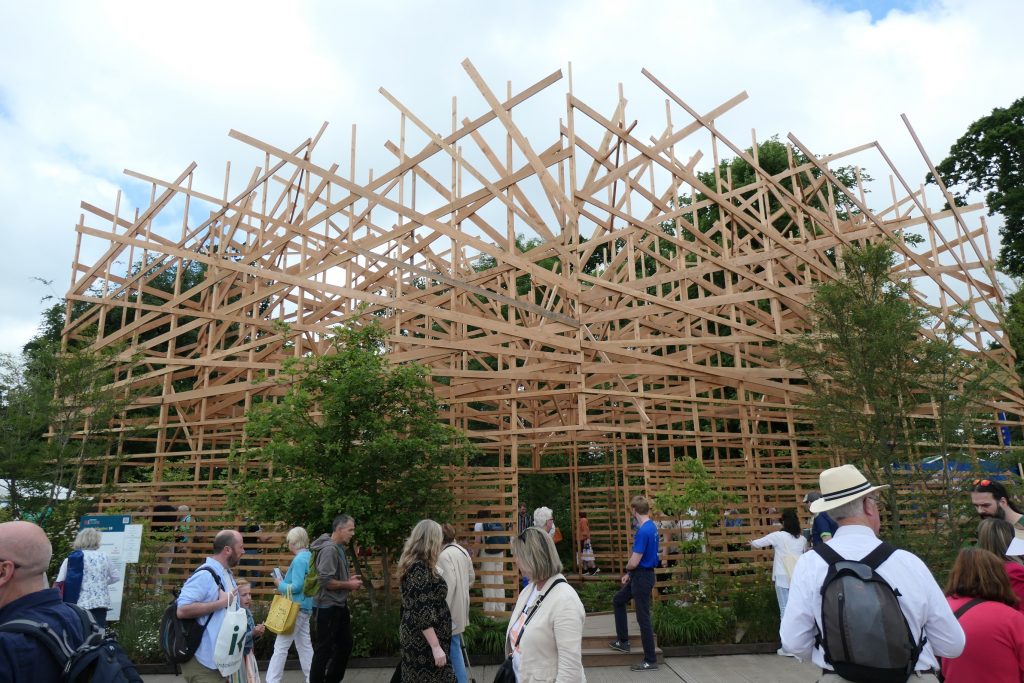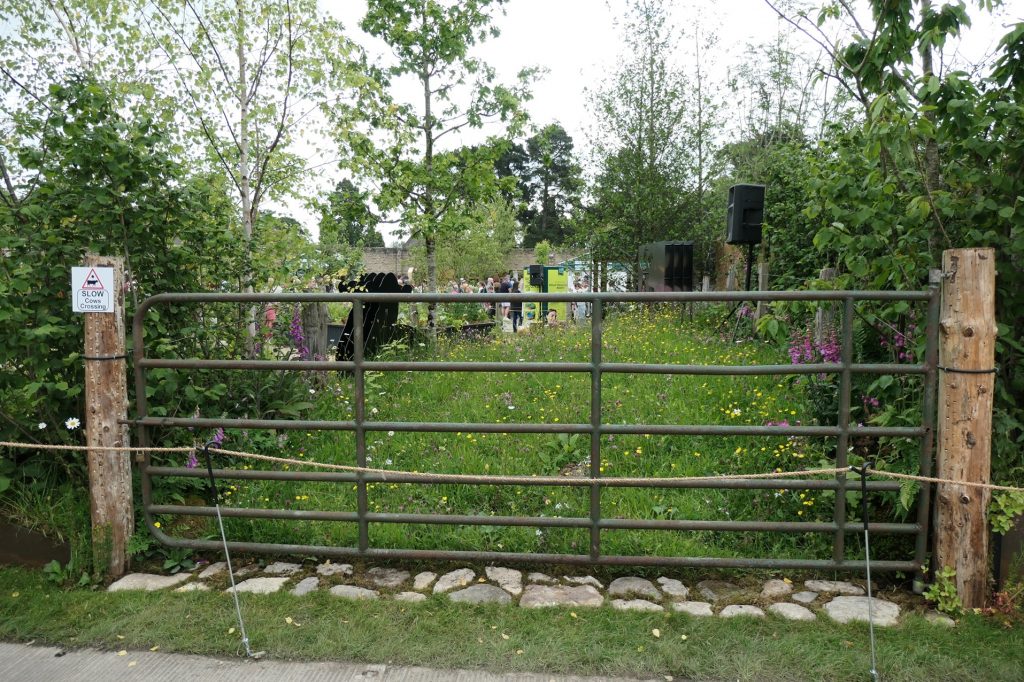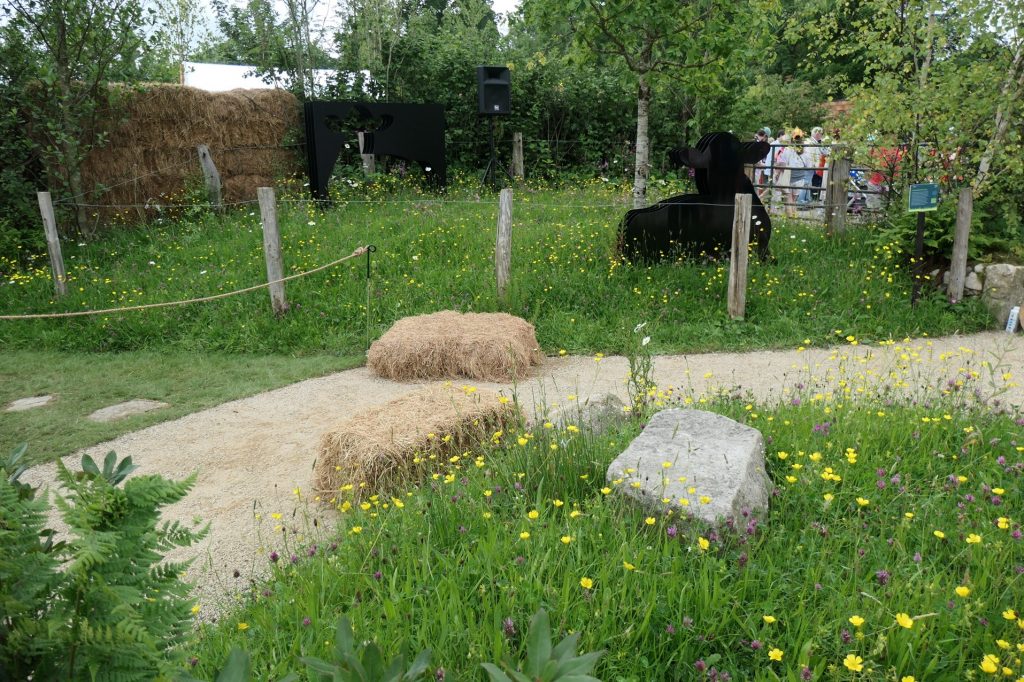June Bank Holiday weekend is synonymous with the beginning of the Irish summer, imminent holidays, strawberries and cream, and Bord Bia’s Bloom festival, featuring 2024 21 show gardens. Laura Douglas, Head of Bord Bia Bloom & Brand Partnerships penned the welcome in the Show Garden Guide, mentioning as key themes living in ‘greater harmony with nature,’ protecting ‘wildlife and the environment in our gardens’ and providing spaces that offer wellbeing benefits. Kerrie Gardiner, the event content manager, mentions biodiversity and protecting the local landscape.

To test the claims about gardens protecting biodiversity, I applied the Russo Test. This is my name for the 2022 study (Laura Russo is the corresponding author) that examined Irish plant-pollinator networks. The study, Conserving diversity in Irish plant-pollinator Networks discovered that 35 plants are of the greatest importance for pollinators.
The scientists collated data from six studies in Ireland where obligate (necessary) flower-visiting insects (specifically butterflies/moths, bees, and hoverflies) were observed/collected while foraging on flowers from May through August in 2009–2011 and 2017 and April through October in 2018. Transect surveys were made for this study.
What does the study reveal? The study analysed flower-visitor interactions between 239 flowering plant species and 148 insect visitor species in Ireland. The composition of the insect visitor species observed was: 54.7% hoverflies (Syrphidae), 30.7% bees (Anthophila), and 14.6% butterflies and moths (Lepidoptera). However, bees dominated in abundance on flowers (61% bee, 35% hoverfly, and 4% butterfly or moth visits), like in other published studies.

The thirty-five plant species in the Irish plant-pollinator network that rank in the top ten of the different measures (visitation rate (a), average abundance of visitors (weighted degree, (b)), average species richness of visitors (unweighted degree, (c)), betweenness centrality (d), duration of bloom, (e) and functional complementarity (supporting different insects) (f)) ranked from highest (top) to lowest (bottom) under (e) are:
Trifolium pratense Red Clover
Ranunculus repens Creeping Buttercup
Potentilla erecta Tormentil
Lotus corniculatus Common Bird’s-foot-trefoil
Bellis perennis Common Daisy
Centaurea nigra Common Knapweed
Prunella vulgaris Selfheal
Plantago lanceolata Ribwort Plantain
Leontodon saxatilis Lesser Hawkbit
Trifolium repens White Clover
Ranunculus acris Field Buttercup
Heracleum sphondylium Common Hogweed
Taraxacum agg dandelions
Cirsium arvense Creeping Thistle
Rubus fruticosus Bramble
Cirsium vulgare Spear Thistle
Cirsium palustre Marsh Thistle
Leontodon hispidus Rough Hawkbit
Thymus polytrichus Wild Thyme
Scorzoneroides autumnalis Autumn Hawkbit
Senecio jacobaea Common Ragwort
Lapsana communis Nipplewort
Lythrum salicaria Purple Loosestrife
Fuschia sp Fuschia
Oxalis debilis Large-flowered Pink-sorrel (non-native)
Crepis capillaris Smooth Hawksbeard
Buxus sempervirens Box
Sambucus nigra Elder
Glenchoma hederacea Ground-ivy
Primula vulgaris Primrose
Chrysanthemum segtum Corn Marigold (Probably introduced)
Diplotaxis tenuifolia Perennial Wall-rocket (non-native)
Rhus sp Cashew Family non-native
Scrophularia auriculata Water Figwort
Crepis biennis Rough Hawk’s-beard (Probably introduced)
I tested each of the 21 show gardens against this list.
What did I find at Bloom?
A mere nine of these 35 plants were represented in the 21 show gardens.
Those recorded and the number of gardens they appeared in were:
Red Clover (3), Creeping Buttercup (1), Common Bird’s-foot-trefoil (2), Common Daisy (2),
Ribwort Plantain (1), White Clover (2), Field Buttercup (4), Dandelion (1), Box (1-2).
This is pathetic. The cant about pollinators and acting for them and biodiversity generally is mostly unsupported by Bloom’s gardens. There were few bees on show and zero butterflies, despite the warm sunshine. The vacuity of this window dressing was reinforced by the literature being handed out showing important plants for pollinators. So, it’s not that nobody knows what’s needed.
One garden, entitled Rewild, styled itself as a space that incorporates traditional high-intensity management and moves towards a ‘wilder, more natural space’ to mark ‘the shift towards embracing biodiversity and creating a space where people live in harmony with nature.’ ‘Pollinator-friendly plants and habitat structures invite insects and birds into the garden.’ The garden was certainly attractive, but bug hotel aside, there wasn’t much for pollinators there. There appears to be an obsession in most of Bloom’s gardens with cultivars of Brook Thistle Cirsium rivulare. The unadulterated plant is native to damp areas in East France and Southern Germany. Don’t bother with it. Grow our lovely native wetland thistle, Meadow Thistle Cirsium dissectum instead. I have watched Orange-tip, Marsh Fritillary and Dark Green Fritillary enjoying its nectar, along with bumble bees.
Annoying and ironic was the In Perspective Garden by the European Commission. The booklet introduces its theme thus:
This European Commission garden articulates the values of the EU Green Deal which seeks to make Europe the first carbon-neutral continent by 2050.

This initiative includes protecting our biodiversity and ecosystems and one of its actions is the Biodiversity strategy for 2030. The strategy aims to put Europe’s biodiversity on a path to recovery by 2030 and contains specific actions and commitments. These include the EU Nature Restoration Law and enlarging protected areas. One of the targets of the EU biodiversity strategy for 2030 is to legally protect and effectively manage a minimum of 30% of EU land by 2030.
I saw scant evidence in the plants used of a thematic link between this garden and nature restoration or biodiversity protection. I saw two herbs and one grass species in this garden native to Ireland: Wild Valerian, Red Campion and Wood Brome. Without native plants, biodiversity stands little chance of survival, let alone recovery. Our native butterflies, moths, and invertebrates generally rely on native plants for their life cycles. The European Commission should know better.

Two gardens deserve a mention for biodiversity protection. The garden with the most native flowers was the Brigid 1500 Commemorative Garden. I counted six native trees, one native shrub and seven native flowers: Common Bird’s-foot-trefoil, Cowslip, Common Daisy, Red Clover, Ribwort Plantain, dandelion and Meadow Buttercup.

The other garden that had a meaningful link with biodiversity was Nourishing Dairy-From the Ground Up by Tunde Perry sponsored by the National Dairy Council. The text describing this garden lacks the pretentious verbiage typical of many ‘compositions.’ The text describes what is there, and the garden encompassed the stated elements: ‘grass meadow, multispecies sward and Irish native trees, shrubs and hedgerows.’ This sward held Meadow Buttercup, Red Clover, Ox-eye Daisy, Yellow Rattle, Cowslips, Ragged Robin and Foxgloves. The shrubs included Common Hazel. This is the only garden where I saw a Lepidopteran, a Grass Rivulet moth laying eggs on Yellow Rattle, on the capsule holding the seeds.

Supporting Sick Children
One garden, Children’s Heath Foundation Garden of Music and Play designed by Declan McKenna listed the 31 plants used in the garden. It contains zero native plants and only one that is outstanding for butterflies, Verbena bonariensis. Providing a welcoming space for children in the new Children’s Hospital’s four acres of green space and 14 gardens and internal courtyards, mentioned in the leaflet provided, would benefit tremendously from native plants. Water Mint Mentha aquatica, Corn Mint Mentha arvensis, Wild Thyme Thymus polytrichus, Common Marjoram Origanum vulgare and Bog Myrtle Myrica gale (all native) have attractive aromatic leaves and blooms, providing children with visual, tactile, olfactory experiences as well as drawing in masses of pollinators. Add showy natives Common Knapweed Centurea nigra, Greater Knapweed Centaurea scabiosa, Devil’s-bit Scabious Succisa pratensis, Wild Teasel Dipsacus fullonum for structure, colour and clouds of hoverflies, bees, butterflies and moths and the benefits for children’s wellbeing, and their families, are hugely enhanced. Set a moth trap in the National Children’s Hospital native gardens twice a week from March to October for more well-being. Children and parents can take photos of the colourful butterflies visiting the plants. Plant some brassicas to attract Large White and Small White butterflies to breed in the hospital gardens, to show butterfly life cycles in action. Children could save seeds from some of the flowering plants to grow in pots at home, giving them more to look forward to. More imagination applied by the Children’s Health Foundation would greatly assist in the therapeutic journey travelled by children and their stressed parents.
Bloom is visited by tens of thousands of well-meaning gardeners every year. Another chance to evangelise about biodiversity, to demonstrate biodiversity. ‘Yet to meet expectations’ is a benign way of saying Bloom overall didn’t achieve the description stated in the Guide. The plants on show, overwhelmingly non-native, simply deceive people about the ecological relationship between plants and animals. Go native.
Photos J. Harding
Reference
Russo, L., Fitzpatrick, Ú., Larkin, M., Mullen, S., Power, E., Stanley, D., White, C., O’Rourke, A., & Stout, J. C. (2022). Conserving diversity in Irish plant–pollinator networks. Ecology and Evolution, 12, e9347. https://doi.org/10.1002/ece3.9347

